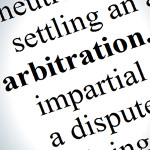White Paper: Electronic Signature Security & Trust
 eSignLive by Vasco has made available for downloading a new white paper that discusses the best security practices for implementing e-signatures and evaluating vendors. (See the download form below.)
eSignLive by Vasco has made available for downloading a new white paper that discusses the best security practices for implementing e-signatures and evaluating vendors. (See the download form below.)
“It is important to make sure your electronic signature provider meets the highest security standards. Security is at the core of a trusted digital experience between you, your employees and customers,” the company says on its website.
That means more than simply passing an audit. eSignLive recommends taking a broader view of e-signature security that also addresses:
- Choosing the appropriate level of authentication
- Protecting signatures and documents from tampering
- Making it easy to verify e-signed records
- Ensuring vendor-independent records
- Verifying the vendor has a consistent track record of protecting customer data
- Creating end-to-end trust through white-labeling and integration with your existing IAM framework
The white paper includes a best practices checklist.
var gform;gform||(document.addEventListener("gform_main_scripts_loaded",function(){gform.scriptsLoaded=!0}),window.addEventListener("DOMContentLoaded",function(){gform.domLoaded=!0}),gform={domLoaded:!1,scriptsLoaded:!1,initializeOnLoaded:function(o){gform.domLoaded&&gform.scriptsLoaded?o():!gform.domLoaded&&gform.scriptsLoaded?window.addEventListener("DOMContentLoaded",o):document.addEventListener("gform_main_scripts_loaded",o)},hooks:{action:{},filter:{}},addAction:function(o,n,r,t){gform.addHook("action",o,n,r,t)},addFilter:function(o,n,r,t){gform.addHook("filter",o,n,r,t)},doAction:function(o){gform.doHook("action",o,arguments)},applyFilters:function(o){return gform.doHook("filter",o,arguments)},removeAction:function(o,n){gform.removeHook("action",o,n)},removeFilter:function(o,n,r){gform.removeHook("filter",o,n,r)},addHook:function(o,n,r,t,i){null==gform.hooks[o][n]&&(gform.hooks[o][n]=[]);var e=gform.hooks[o][n];null==i&&(i=n+"_"+e.length),gform.hooks[o][n].push({tag:i,callable:r,priority:t=null==t?10:t})},doHook:function(n,o,r){var t;if(r=Array.prototype.slice.call(r,1),null!=gform.hooks[n][o]&&((o=gform.hooks[n][o]).sort(function(o,n){return o.priority-n.priority}),o.forEach(function(o){"function"!=typeof(t=o.callable)&&(t=window[t]),"action"==n?t.apply(null,r):r[0]=t.apply(null,r)})),"filter"==n)return r[0]},removeHook:function(o,n,t,i){var r;null!=gform.hooks[o][n]&&(r=(r=gform.hooks[o][n]).filter(function(o,n,r){return!!(null!=i&&i!=o.tag||null!=t&&t!=o.priority)}),gform.hooks[o][n]=r)}});
- --Select your industry--Aerospace & AviationBanking & Financial ServicesEducationEngineering & ConstructionEntertainment, Travel, HospitalityGovernment – DefenseGovernment – Federal CivilianGovernment – State/LocalHealthcare & Life SciencesInsuranceLegalManufacturingNon-ProfitRetailSoftware – ResellerSoftware – DeveloperTechnologyTelecommunicationsTransportation & ShippingOther
 LawGeex has published a
LawGeex has published a eSignLive by Vasco
eSignLive by Vasco CNN Money
CNN Money  Managing third-party vendor relationships has recently become a hot topic for state and federal financial bank regulators, writes
Managing third-party vendor relationships has recently become a hot topic for state and federal financial bank regulators, writes  In reviewing the scope of an arbitration agreement that was part of a supply agreement, the U.S. Court of Appeals for the Federal Circuit affirmed the district court’s decision, determining that the defendant’s breach of contract counterclaims were related to the plaintiff’s patent infringement claims and thus were exempt from compulsory arbitration under the supply agreement, reports
In reviewing the scope of an arbitration agreement that was part of a supply agreement, the U.S. Court of Appeals for the Federal Circuit affirmed the district court’s decision, determining that the defendant’s breach of contract counterclaims were related to the plaintiff’s patent infringement claims and thus were exempt from compulsory arbitration under the supply agreement, reports  Exterro
Exterro
 With all the pressure on companies to build a robust cybersecurity defense within their own four walls, one area of risk might be getting overlooked, writes
With all the pressure on companies to build a robust cybersecurity defense within their own four walls, one area of risk might be getting overlooked, writes 
